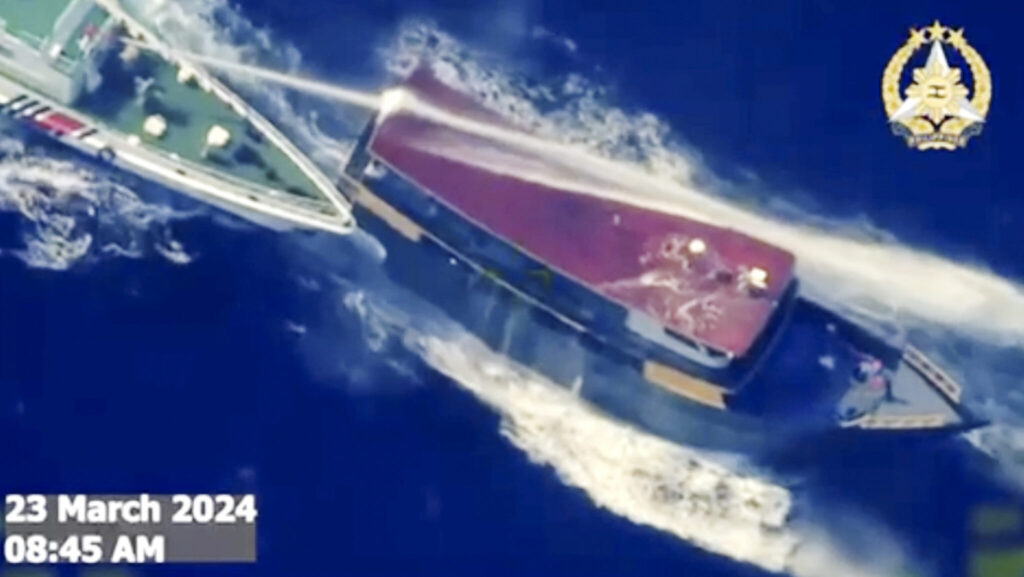Chinese coast guard ships hit a Philippine supply boat with water cannons Saturday in the latest confrontation near a disputed shoal in the South China Sea, causing injuries to its navy crew members and heavy damage to the wooden vessel, Philippine officials said.
Quick Read
- Chinese coast guard ships used water cannons on a Philippine supply boat near the disputed Second Thomas Shoal, injuring crew members and damaging the vessel.
- The United States and Japan expressed support for the Philippines and concern over Chinese aggression.
- The incident escalates tensions in the South China Sea, a key global trade route and area of territorial disputes.
- The U.S. reaffirms its commitment to defend the Philippines under their treaty alliance if Filipino forces come under attack in the region.
- The Philippine boat, escorted by Philippine coast guard ships, was delivering supplies to a Philippine navy outpost when blocked by Chinese vessels.
- The confrontation lasted about 8 hours, with the Philippine government demanding China act as a responsible international community member.
- China claims the Philippine vessels intruded into its territorial waters, enforcing “lawful regulation.”
- The incident adds to the series of confrontations in the South China Sea, involving multiple countries with overlapping claims.
The Associated Press has the story:
Chinese coast guard hits Philippine boat with water cannons, causing injuries
Newslooks- MANILA, Philippines (AP) —
Chinese coast guard ships hit a Philippine supply boat with water cannons Saturday in the latest confrontation near a disputed shoal in the South China Sea, causing injuries to its navy crew members and heavy damage to the wooden vessel, Philippine officials said.
The United States and Japan immediately expressed their support to the Philippines, as well as alarm over Chinese forces’ aggression off the Second Thomas Shoal, which has been the scene of repeated confrontations between Chinese and Philippine vessels over the past year.
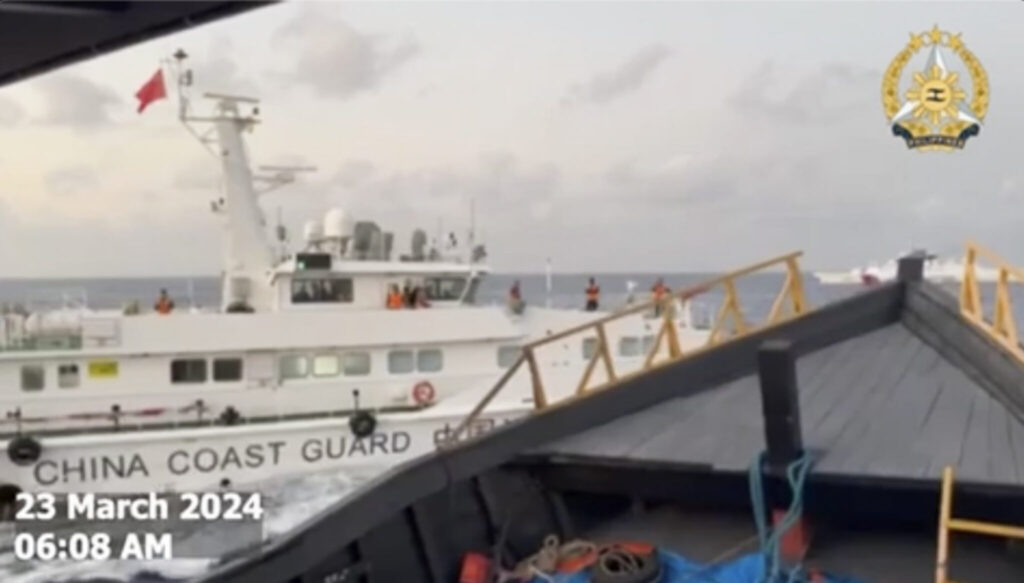
The far-flung shoal has been occupied by a small contingent of Philippine navy and marines on a marooned warship since 1999, but has been surrounded by Chinese coast guard and suspected militia vessels in an increasingly tense territorial standoff. It’s the second time the Philippine boat Unaizah May 4 has been damaged by the Chinese coast guard’s water cannon assault in March alone.
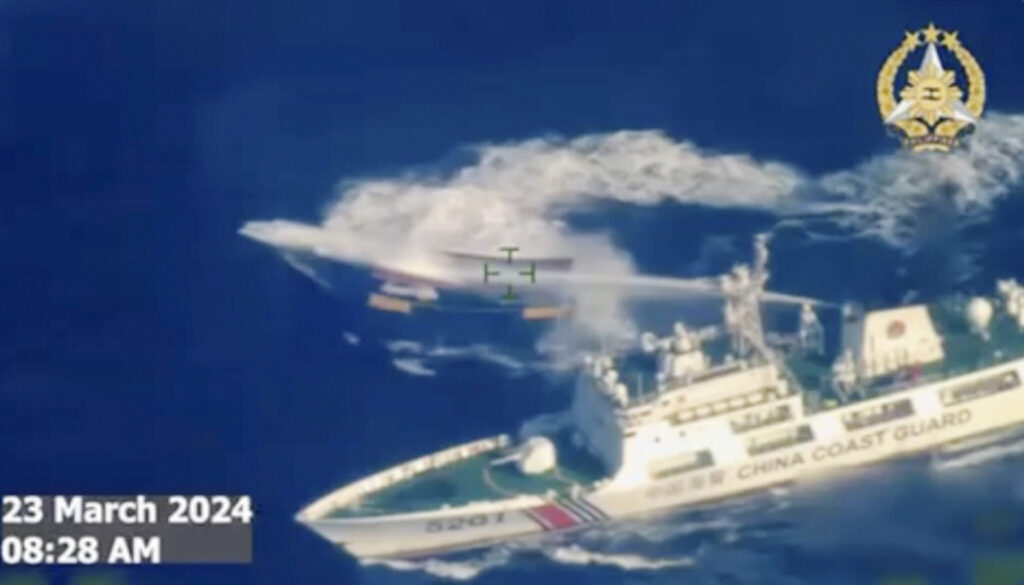
The repeated high-seas confrontations have sparked fears they could degenerate into a larger conflict that could bring China and the United States into a collision.
Washington lays no claims to the busy seaway, a key global trade route, but has deployed Navy ships and fighter jets in what it calls “freedom of navigation” operations, which China has criticized.
The U.S. has also warned repeatedly that it’s obligated to defend the Philippines — its oldest treaty ally in Asia — if Filipino forces, ships and aircraft come under an armed attack, including in the South China Sea.
Escorted by two Philippine coast guard ships, the Unaizah May 4 was en route to deliver supplies and a fresh batch of Filipino sailors to the territorial outpost in the shoal at dawn Saturday when they were blocked and surrounded by Chinese coast guard ships and suspected militia vessels.
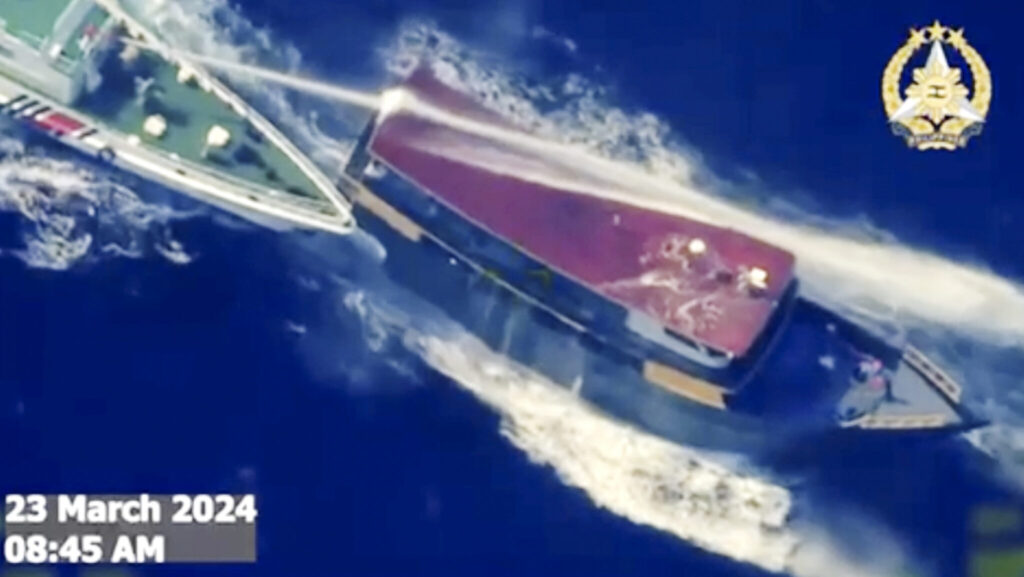
“Their reckless and dangerous actions culminated with the water cannoning of Unaizah May 4, causing severe damage to the vessel and injuries to Filipinos onboard,” a Philippine government task force dealing with the territorial conflicts said without elaborating.
The two Philippine coast guard patrol ships maneuvered through the Chinese blockade to treat the injured Filipino crew members and tow the disabled supply boat away. Another motorboat managed to transport the new batch of Filipino sailors and supplies to the Philippine outpost in the shallows of the shoal despite the Chinese coast guard’s attempt to block them by placing a floating barrier in the waters, Philippine officials said.
The hostilities dragged on for about 8 hours, they said.
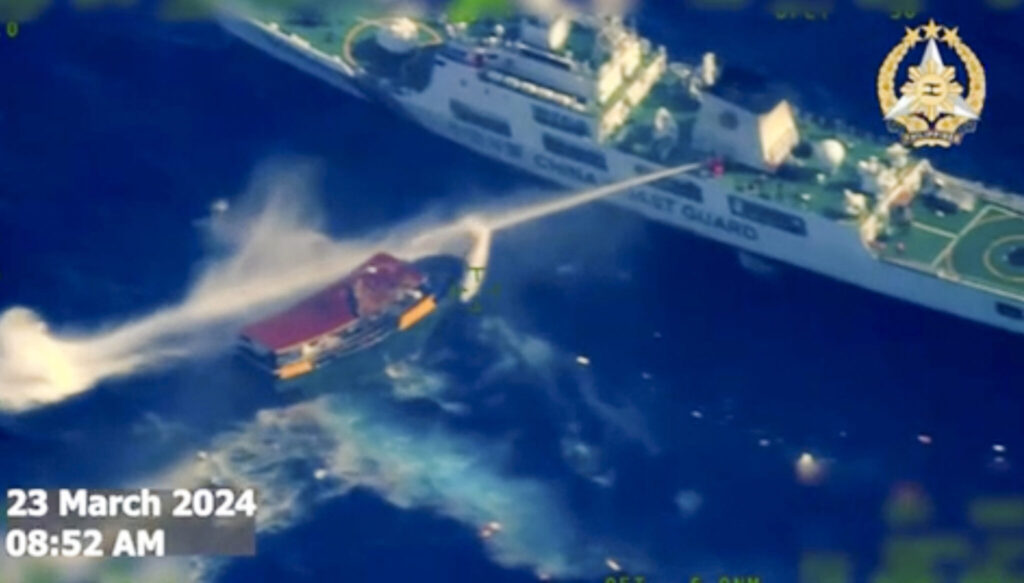
“The Philippines will not be deterred — by veiled threats or hostility — from exercising our legal rights over our maritime zones,” the government task force said in a statement. “We demand that China demonstrate in deeds and not in words that it is a responsible and trustworthy member of the international community.”
Chinese coast guard spokesperson Gan Yu said the Philippine vessels intruded into what he said was China’s territorial waters despite repeated warnings. “The China coast guard implemented lawful regulation, interception and expulsion in a reasonable and professional manner,” Gan said.
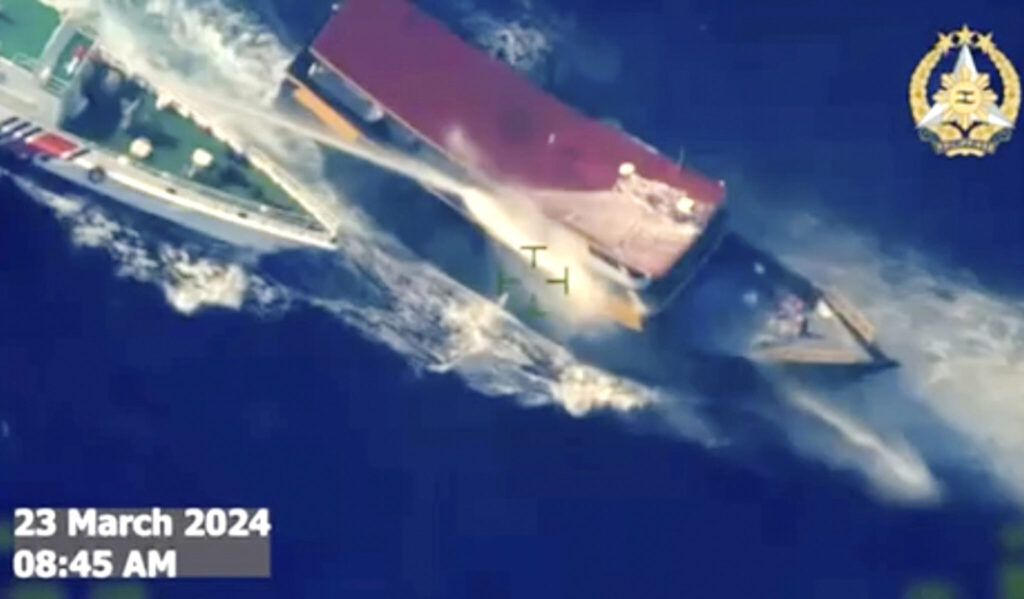
Washington’s ambassador to Manila, MaryKay Carlson, said that “the U.S. stands with the Philippines against the PRC’s repeated dangerous maneuvers and water cannons to disrupt” the Philippine coast guard’s “lawful activities” in Manila’s exclusive economic zone.
Japan’s ambassador-designate to Manila, Endo Kazuya, reiterated his country’s “grave concern on the repeated dangerous actions by the Chinese coast guard in the South China Sea, which resulted in Filipino injuries.”
Aside from China and the Philippines, Vietnam, Malaysia, Taiwan and Brunei also have overlapping claims in the resource-rich and busy waterway, which Beijing continues to claim virtually in its entirety despite a 2016 international arbitration ruling that invalidated its expansive claims on historical grounds.
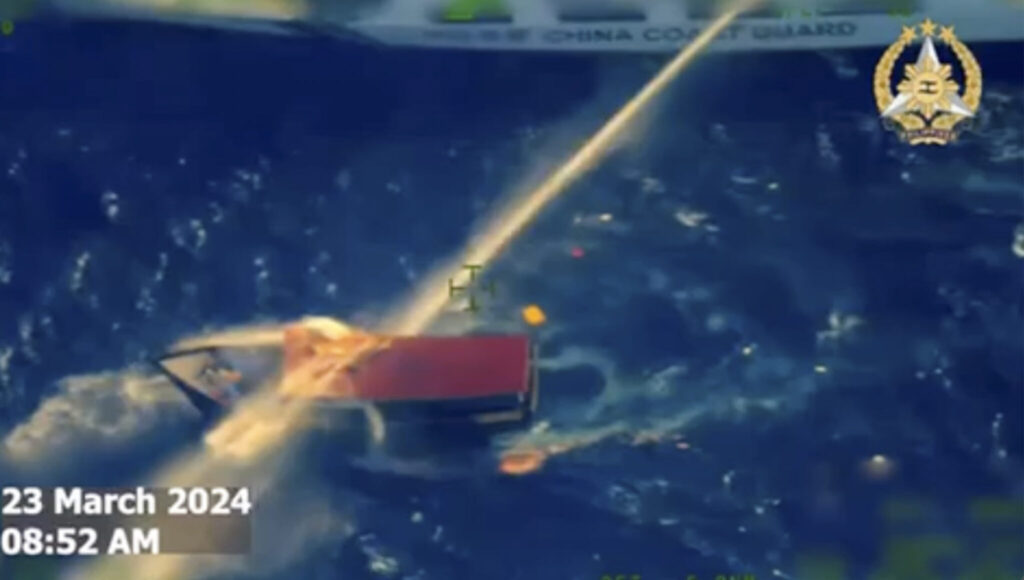
Video released by the Philippine military shows two Chinese coast guard ships hitting the smaller wooden-hulled boat Unaiza May 4 with high-pressure water cannon sprays at close range, causing the boat to shift in the high seas.
Chinese coast guard previously blasted the Unaizah May 4 with high-pressure water cannons in a confrontation near the Second Thomas Shoal on March 5, shattering its windshield and slightly injuring a Filipino admiral and four of his men with glass shards and splinters of debris.
The Department of Foreign Affairs in Manila summoned China’s deputy ambassador after the March 5 confrontation to convey a protest against the Chinese coast guard’s actions, which it said were unacceptable.

